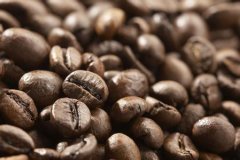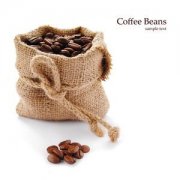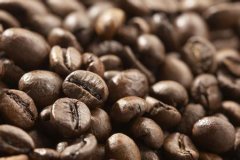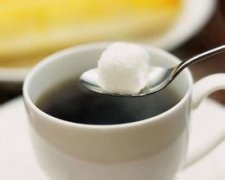Specialty Coffee Beans Lists
-
El Salvador's unique, mild coffee

Unique, mild-tasting coffee. El Salvador is one of the small countries in Central America with a dense population. The flavor of its coffee is characterized by excellent balance. Today, this coffee accounts for 40% of the country's exports. 35% of the extra hard beans of the best coffee are exported to Germany from January to March. In the early 1990s, guerrilla warfare greatly damaged the country's national economy.
2015-04-15 El Salvador unique taste mild coffee -
Introduction of coffee and bean producing countries in Dominica

Delicious, sweet, full-grained coffee the Dominican Republic (Dominican Republic) is next to Haiti, and both own the island of Hispaniola (Hispaniola). Like its neighbours, the Dominican Republic had a history of revolution and poverty, but now it has democratic elections and the country is relatively stable. In the early 18th century, coffee began to spread in Dominica.
2015-04-15 Dominica coffee beans country of origin introduction delicious sweet granulated full coffee -
Introduction of Coffee and Bean producing countries in Cuba

If the country that produces cigars does not have the best coffee to go with it, it must be a pity that the best coffee in Cuba is Turquino or Extra Turquino. Tujino is a coffee grade, not a place name, just like Blue Mountain. This kind of coffee has a pure flavor and moderate granules.
2015-04-15 Cuba coffee coffee beans producing countries introduction if this production is equal to snow. -
Costa Rican coffee has full granules, ideal acidity and unique strong flavor.

Costa Rican coffee has full grains, ideal acidity and unique strong aroma. Tarrazu of Costa Rica is one of the major coffee producing areas in the world. Costa Rica, with its fertile volcanic soil and good drainage, is the first country in Central America to grow coffee and bananas for commercial value. Coffee and bananas are
2015-04-15 Costa Rica coffee granule fullness acidity ideal fragrance unique strong -
Colombian coffee is classified according to defective beans.

According to the classification of defective beans, defective beans can be divided into two types:-first: called first-class defects-second: called second-level defects. First: main defects (defects that affect the taste characteristics of coffee): black beans. Private exporters of moldy beans or sour beans: no more than 12 national coffee committees: no more than 8 first-level defective beans, second: secondary defects
2015-04-15 Columbia coffee grading according to defect classification basis score -
Single Coffee-Sumatra Mantinen

Asian coffee is best known for growing on the islands of the Malay Archipelago: Sumatra, Java, Kalimantan (formerly Borneo), Sulawesi and New Guinea. Sumatra's history of coffee cultivation dates back to the 18th century, and the name mantenin itself
2015-04-14 Single item Coffee Sumatra Mante Asia Famous Origin Number Horse -
Colombia Coffee Boutique Coffee Basics

Colombia Coffee Producers Association (Federación Nacional de Cafeteos de Clolambia), or industry abbreviation [FNC] staff introduced the two main varieties of Colombian coffee, Cadura and Colombia. Kadura was introduced from Brazil in the 1960s and now accounts for 45-50% of Colombia's production, replacing the earliest Tibica. A new breed of the same name as Colombia [Colombi
2015-04-14 Colombia Coffee Fine Basic Common sense Producer Association -
Basic knowledge of Harald coffee boutique coffee beans

Harald (Harar) is 1600 meters above sea level, and the Harald Heights in eastern Ethiopia is one of the highest elevation areas for human coffee cultivation (some even claim to be as high as 2000 Murray 2,700 meters). Across the Gulf of Aden, overlooking the two ports of Moka and Aden in Yemen. For centuries, Harald coffee farmers carried coffee beans down the mountain with camels, donkeys or carriages, risking being besieged by hyenas.
2015-04-14 Harald Rahl coffee boutique coffee beans basics common sense -
Basic knowledge of Guatemalan coffee boutique coffee beans

Guatemala is bordered by Mexico to the north, Honduras and El Salvador to the south, the Caribbean to the east and the Pacific Ocean to the west, with tropical rain forests, volcanic geology, plateau valleys and changeable microclimate. The average elevation of dangerous countries is high, with coffee belts distributed over 1500 meters and between 14 and 16 degrees north latitude, it is easiest to grow extremely hard beans, all of which are washed, 45% of which are washed.
2015-04-14 Guatemala coffee boutique coffee beans basics common sense north Mexico -
Indonesian Coffee Asian Coffee

Asian coffee is more full-bodied than Central and South American and African beans, but less sour, with a hint of heavy wood, herbs, spices and earth, and a deep, smoky aroma over an elevated acid aroma. At the end of the seventeenth century, the Dutch East India Company transplanted the Arabica tree (tibica) from India to Jakarta, Java. Due to the favorable climate and soil conditions, Arabica soon spread to Sumatra on Java Island.
2015-04-14 Indonesia coffee Asia presentation thickness Central and South America Africa beans -
Brazilian Coffee Basic Knowledge

Brazil is the world's largest coffee producer. Although Brazil has failed to increase production in recent years, it has greatly improved the quality of coffee in the past decade. It has tried its best to get rid of the argument that Brazil is not heavy in weight and Brazil beans are light as water. In recent years, it has successfully transferred to the fine coffee market.
2015-04-14 brazil coffee boutique basics common sense -
Introduction of Kopi Luwak Indonesian civet coffee

Kopi Luwak is a traditional specialty in some Indonesian islands, such as Java, Sumatra, Bali and Sulawesi. The civet only contains this unique coffee in its feces after eating the local coffee cherry fruit. In fact, the official name of Kopi Luwak is Kopi Luwak. Kopi means coffee in Indonesian and Luwak is a kind of seal.
2015-04-14 Cat shit coffee Indonesia musk introduction some islands Java Sumanda -
American Coffee beans Hawaiian Kona / Kona Coffee (Hawaii Kona)

Hawaii, a beautiful tropical Pacific island, not only produces beautiful scenery, but also produces the famous Kona coffee. Kona is also named after origin. Only coffee beans grown and strictly certified on the southwest coast of Hawaii's main island, 20 miles long and 2 miles wide, 150m ~ 750m above sea level, covering the slopes of Hualalai and Mauna Loa volcanoes, can be crowned with Kon.
2015-04-14 United States coffee beans Hawaii Kona coffee Kon -
The knowledge about round beans is also called male beans.

Round bean / common bean, known as Peaberry or caracoli in English, is a variety of coffee beans. In fact, the male bean is a flaw, officially speaking, it is not a normal development of coffee beans. The causes are usually caused by insect damage, lack of rain in case of prolonged drought, or malnutrition of coffee trees. In general, the fruit of a coffee tree contains two coffee beans, each in a flat hemispherical shape.
2015-04-14 Related round beans knowledge also known as public beans English Peaber -
Introduction to Ethiopian Coffee from the producing area of Fine Coffee

Ethiopia is one of the major producers of Arabica coffee in Africa, producing the best Arabian coffee in the world. It is said that coffee was first discovered by shepherds in Essekafa, and the name of coffee evolved from Kafa, so Essex is still the hometown of coffee. The geographical environment of coffee production and processing is very suitable for coffee growth. Coffee is mainly cultivated.
2015-04-14 Boutique coffee origin Ethiopia introduction -
Is Brazilian coffee good? what kind of Brazilian coffee do you have?

A brief introduction to Brazilian Coffee Brazilian coffee generally refers to coffee produced in Brazil. There are many kinds of Brazilian coffee. Like other Arabica coffee, Brazilian coffee is called Brazilian coffee Brazils to distinguish it from Milds coffee. The vast majority of Brazilian coffee is unwashed and sun-dried and is classified according to the name of the state of origin and port of transport. Brazil has 21 states and 17 states produce coffee
2015-04-13 Brazil coffee delicious which brief introduction generally refers to produced in variety -
Introduction and Development History of Colombian Coffee

Colombian coffee is a representative and excellent variety of Arabica coffee. It is a traditional deep-roasted coffee with a strong and memorable taste. Its aroma is rich and thick, with clear high-quality acidity, high balance, sometimes nutty and endless aftertaste. Colombian coffee is similar in appearance and quality.
2015-04-13 Coffee beans common sense Columbia coffee introduction development history Colombia -
Introduction and Development History of Fine Coffee Common sense Blue Mountain Coffee

Introduction to BlueMountainCoffee Coffee Blue Mountain Coffee (Blue Mountain Coffee), which comes from Jamaica, is famous all over the world and is the most superior coffee in the world. Blue Mountain Coffee has a mellow taste, moderate acidity, sweetness and bitterness, and exudes an attractive elegance. The area of the Lanshan island of Jamaica is small, and the Blue Mountains are located northeast of the capital Kingston because it is surrounded by the Caribbean Sea.
2015-04-13 Boutique Coffee Common sense Blue Mountain introduction Development History -
Hawaiian Coffee introduces the characteristics and development history of Kona coffee.

Hawaii, which spans latitudes 19 to 22 degrees, south of the Tropic of Cancer and blown by trade winds, is a perfect coffee-growing area. The 50th state of the United States, 2400 miles from the west coast of the United States, is the only state in the United States that produces coffee. Kona kona in Hawaii is also internationally renowned as one of the best coffee in the world. In the volcanic soil
2015-04-13 Hawaii Coffee introduction Kona characteristics Development History Crossing 22 -
Basic knowledge of boutique coffee beans Kenya AA coffee beans

Kenyan AA coffee is one of the rare good coffees. It is famous for its rich aroma and balanced acidity and is loved by many foodies. It is perfect and balanced, and has a wonderful and strong flavor, both fresh and not overbearing, is a complete but not heavy taste experience. Kenyan coffee is generally grown at an altitude of 1500 to 2100 meters and is harvested twice a year.
2015-04-13 Boutique coffee beans basics common sense Kenya coffee rare one
